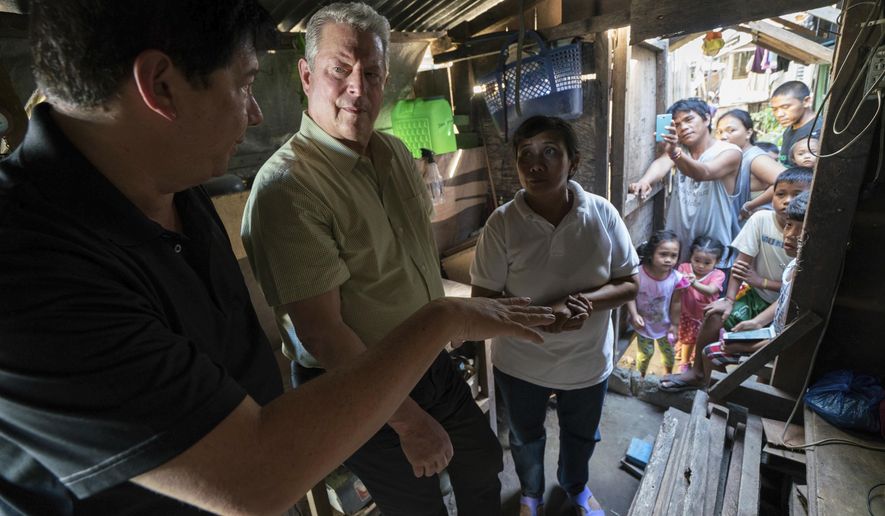OPINION:
Bold predictions have a way of disappointing. Al Gore, whose extreme forecasts of climate catastrophe have yet to prove out, should take note. Blunders in the digital age are difficult to erase. That moving finger writes in permanent ink.
Mr. Gore, a self-described “recovering politician” who has gone from Washington to fame and million-dollar fortune (and then some) as a super environmentalist, blustered in 2006 that unless radical reductions in greenhouse gases that cause global warming were enforced within 10 years the earth would pass the point of no return and be rendered inhospitable or even uninhabitable for children and other living things. He repeated the warning the other day at the Sundance Film Festival, promoting a sequel to his film, “An Inconvenient Truth,” which touched off a fossil-fuel backlash that has since been enshrined in government policy.
It’s now 10 years on, and there’s no sign yet that Doomsday has dawned. Nonetheless, Mr. Gore’s follow-up film, “An Inconvenient Sequel,” renews his Doomsday prediction of disaster when weather behaves badly. When a cheeky skeptic asked what happened to that 10-year tipping point, Mr. Gore lamely replied, “Well, we gotta keep working.”
Digging up proof that man-made global warming threatens humanity is further complicated when insiders blow the whistle on fraud. John Bates, an eminent climate scientist with the National Oceanic and Atmospheric Administration (NOAA), accuses his colleagues of violating their own rules for scientific integrity by including unverified warming data in a report published to justify the United Nations Climate Agreement of 2015.
Mr. Gore defends his assertion in “An Inconvenient Truth” that melting glacial ice would raise sea levels and combine with ocean surges from worsening storms to inundate New York and other coastal cities, offering Superstorm Sandy of 2012 as proof. In fact, Sandy was a middling-strength Category 2 storm — super mostly in property damage owing to its direct hit on the densely populated New York-New Jersey coastline.
Despite the rise in greenhouse gases exhaled by modern civilization, ravaging hurricanes have become less prevalent, not more. Until Hurricane Matthew arrived last September, NOAA says the U.S. mainland had gone 11 years without a storm of Category 3 or higher.
Mr. Gore is clearly no scientific expert. President Trump isn’t either, nor does he play one in a documentary. As a careful businessman, Mr. Trump relies on the bottom line, and determined that the economic benefits Barack Obama voided in the expectation of preventing one one-hundredth of a degree Celsius of global warming by 2100 don’t add up. That’s why he signed executive orders on his second work day, reviving the controversial Keystone XL and Dakota Access pipelines that his predecessor thought he had killed. Once constructed, the pipelines will transport crude oil from oil fields in Canada and the Northern Plains to U.S. refineries, to help make a reality of Mr. Trump’s vow to reinvigorate the American economy with affordable energy.
The climate is in constant motion, playing havoc with scientific efforts to pin it down. Barring solid evidence that scientists have solved the riddle of the planet’s fickle climate, there’s little reason to conclude that human activity has pushed past a temperature tipping point, or that fears of reaching one in the future is warranted. Lower Manhattan is not even damp. Bold predictions get headlines, but they also invite an egg or two for the prophet’s face. Chicken Little could tell Al about that.




Please read our comment policy before commenting.